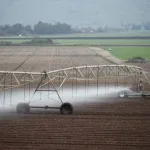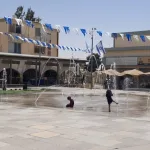Jerusalem, 6 August, 2025 (TPS-IL) — A new study from the University of Haifa sheds light on a little-known chapter of ancient Mediterranean history: Jewish religious scholars in Late Antiquity were not only spiritual leaders, but also active participants in the booming wine industry of the Roman and Byzantine eras.
Published this week in the peer-reviewed Journal of Interdisciplinary History, the study reveals that rabbinic authorities — commonly known as the Talmudic sages — possessed detailed knowledge of viticulture and helped shape agricultural practices in the region that is now Israel. Their legal rulings on vineyard layout, planting methods, and wine production were closely aligned with broader Mediterranean traditions, including those of classical Greece and Rome.
Moreover, the findings underscore that religious law was flexible and responsive to social, economic, and environmental realities, the researchers said.
“The sages’ rulings were not detached from the realities in which they lived,” said Dr. Shulamit Miller of the University of Haifa’s Center for Mediterranean History. “On the contrary, they reflect an intimate familiarity with agricultural work. The sages fully understood the economic systems in which they operated and sought ways to allow Jewish farmers to remain part of the wine industry without compromising religious law.”
During the third and fourth centuries CE, wine was a cornerstone of daily life and commerce throughout the Mediterranean. In Roman Palestine, as in Italy and Greece, vineyards covered the hillsides and wine presses dotted the countryside. Previous scholarship has mostly focused on the production side of the wine industry — such as the storage jars and wine presses found in archaeological digs — but little attention has been paid to how vineyards themselves were cultivated.
This new study shifts that focus. Conducted by an interdisciplinary team including Dr. Miller and Professors Gil Gambash, Guy Bar-Oz, and Eyal Ben-Eliyahu, the research compares ancient Jewish legal texts with archaeological and documentary evidence from across the region, including papyri from Egypt and ruins in Petra and the Negev Desert.
The researchers found that the sages’ guidelines on vineyard spacing — designed to prevent the mixing of different plant species — mirrored the patterns used in Roman and later European vineyards. They also discovered that Jewish religious law only restricted the use of wine after grapes had been pressed, meaning Jewish vineyard owners could legally employ non-Jews or non-observant workers for most of the cultivation process.
“This shows how the legal categories they developed were deeply rooted in practical agricultural realities,” said Miller. “The sages weren’t issuing rulings from ivory towers — they were speaking to people who worked the land, and in many cases, they were doing that work themselves.”
The team concluded that viticulture in ancient Israel followed the same general patterns found across the Mediterranean basin, from Italy to North Africa to the Levant. The topography may have varied — from the lush Galilee to the arid Negev Highlands — but the methods remained strikingly consistent.
The study positions the Talmudic sages as more than religious thinkers. It paints them as practical problem-solvers who crafted a flexible legal system in dialogue with their environment. Their rulings helped Jewish farmers navigate both religious obligations and the economic pressures of a complex, multicultural world.
“Our research emphasizes that Jewish law, or Halachah, was not a closed system,” the researchers said. “It was responsive to changing conditions and deeply embedded in the everyday lives of people. In this way, it played a vital role in sustaining a religious community within the broader landscape of the ancient Mediterranean economy.”




























